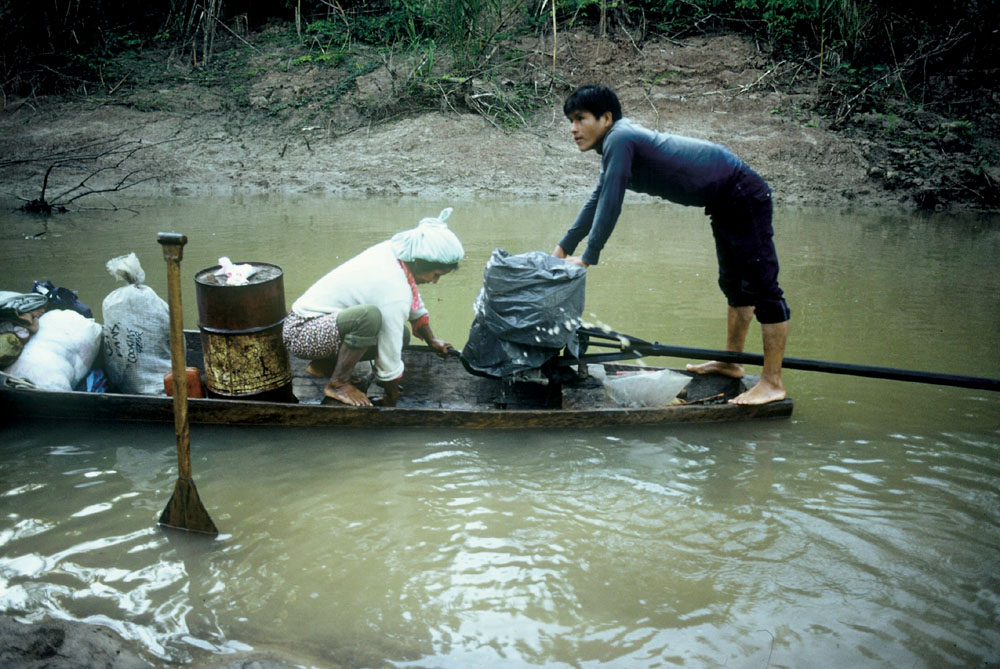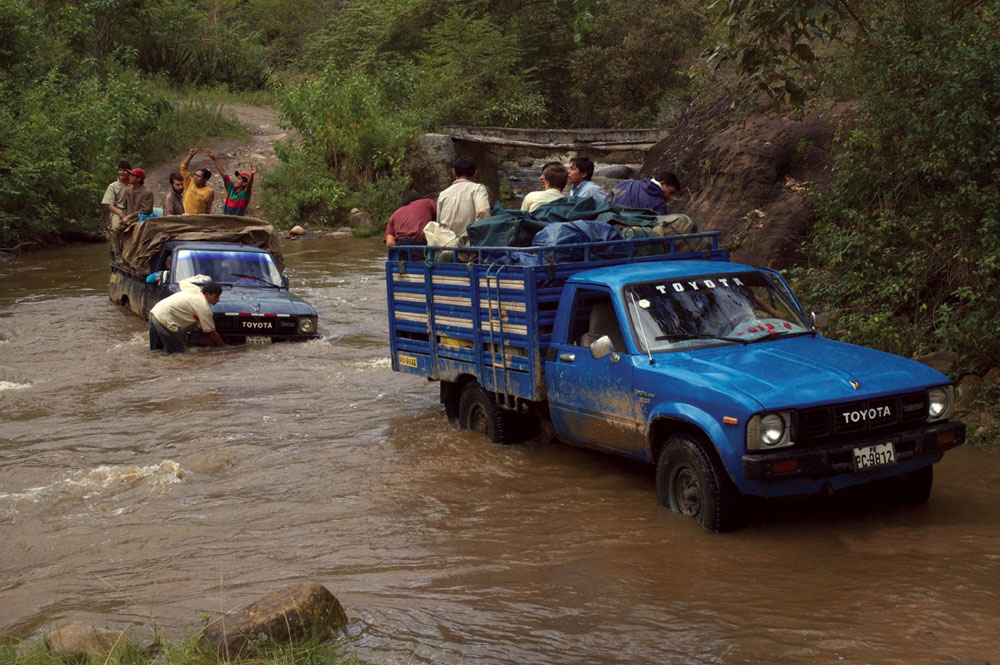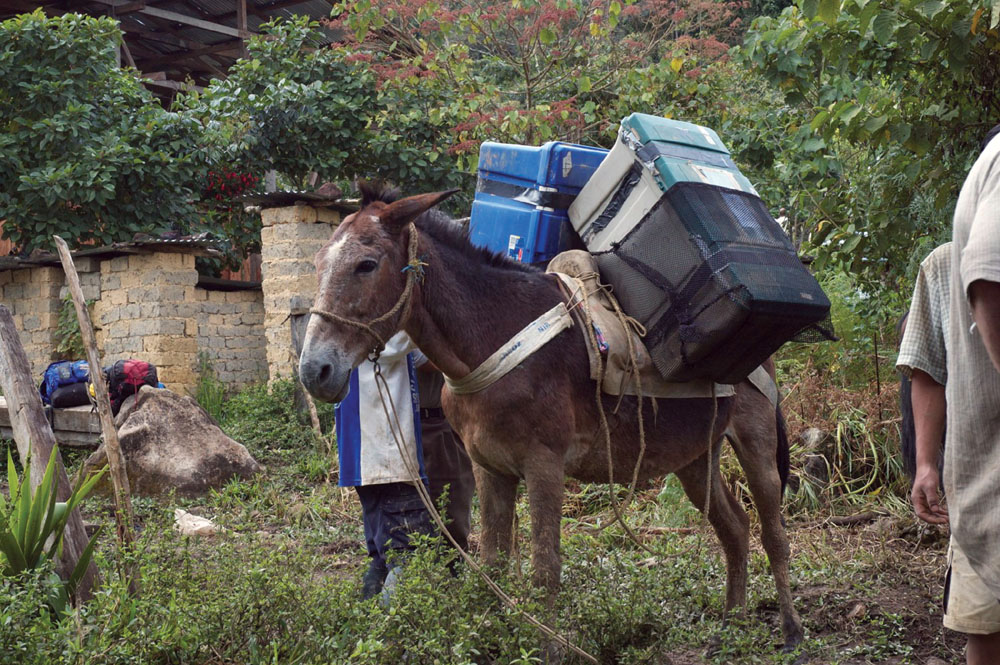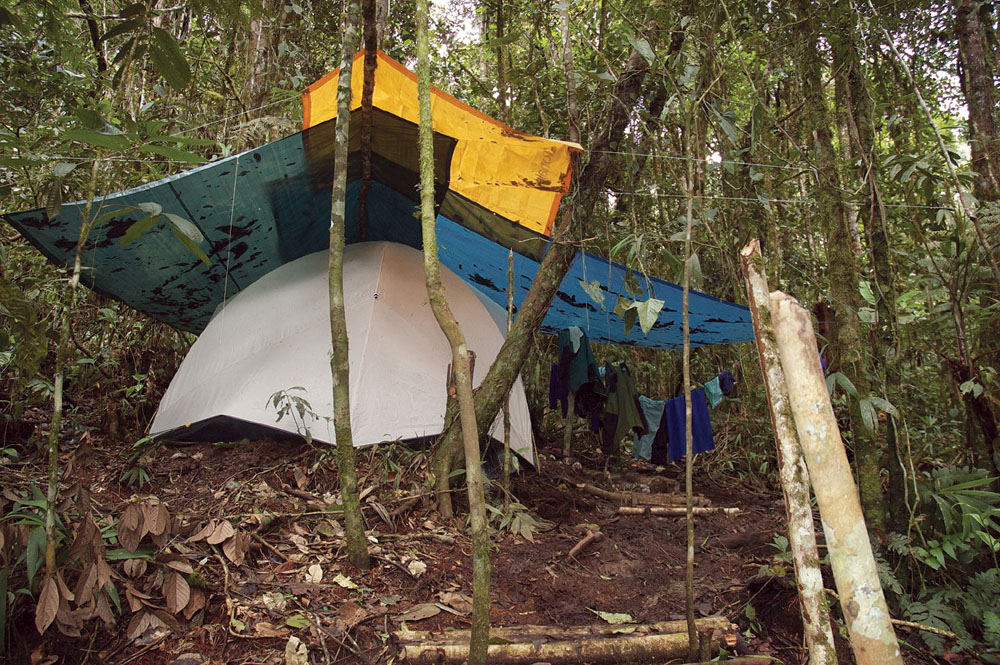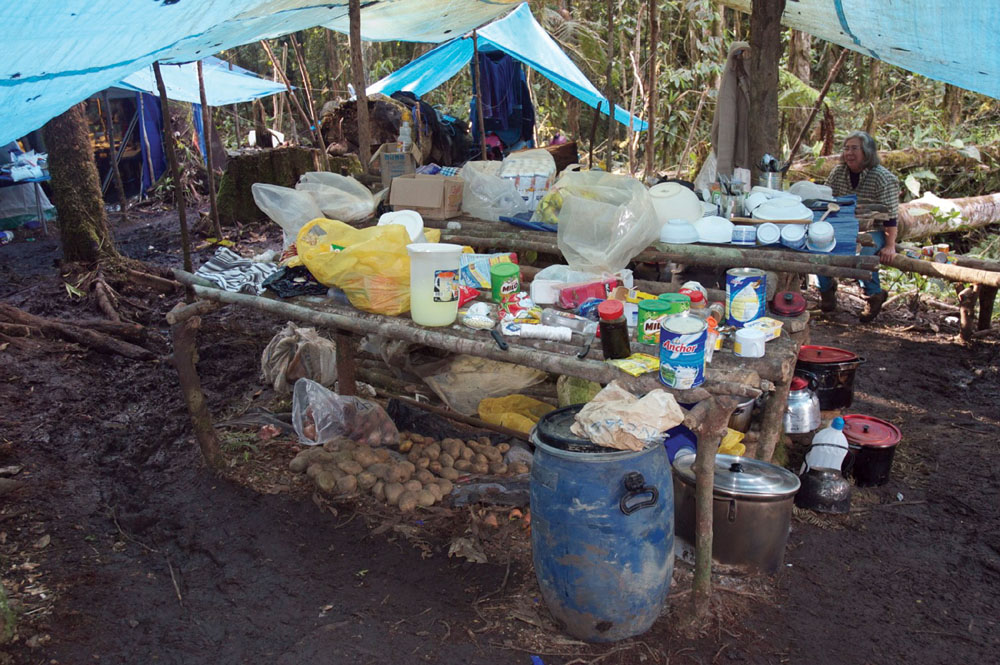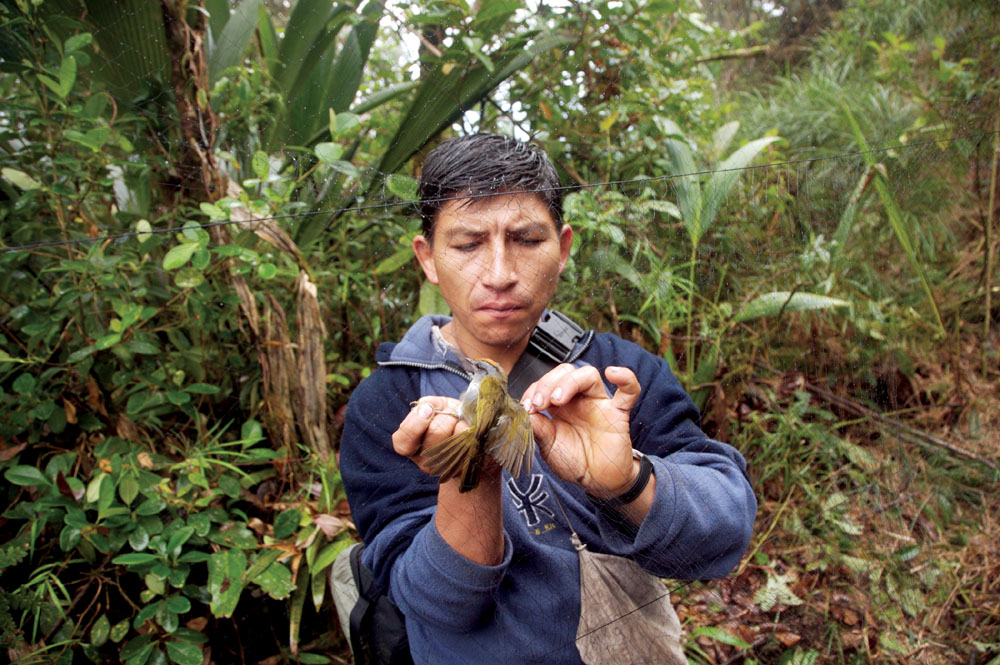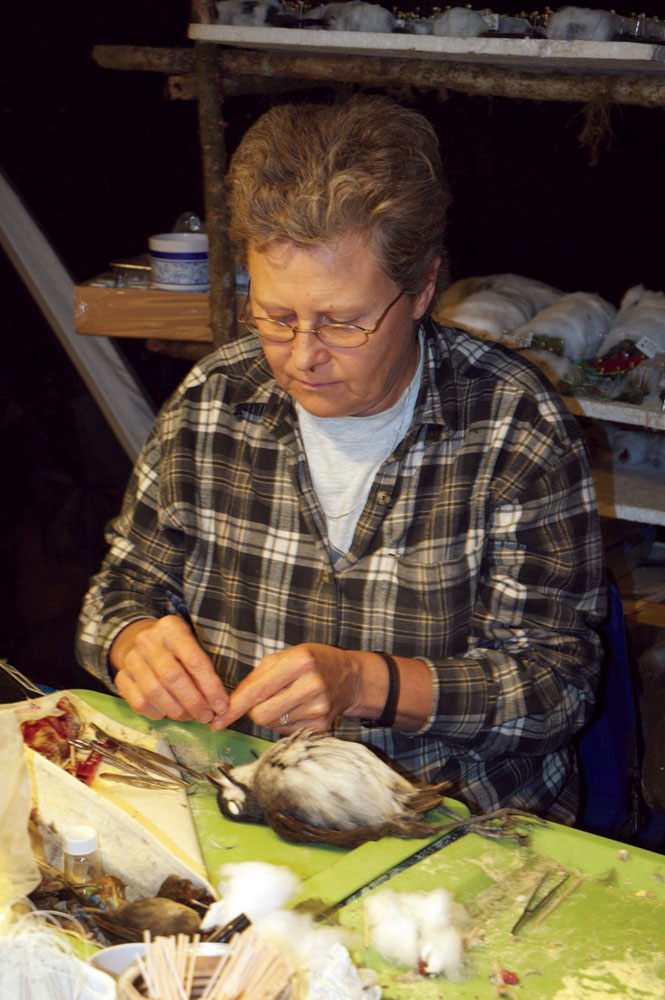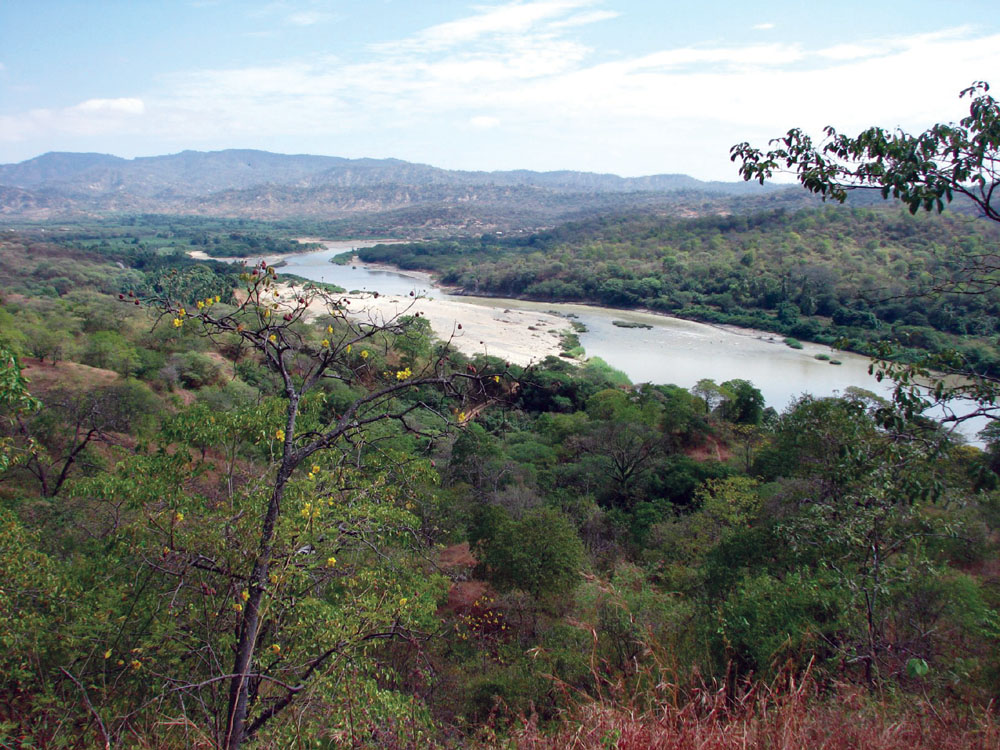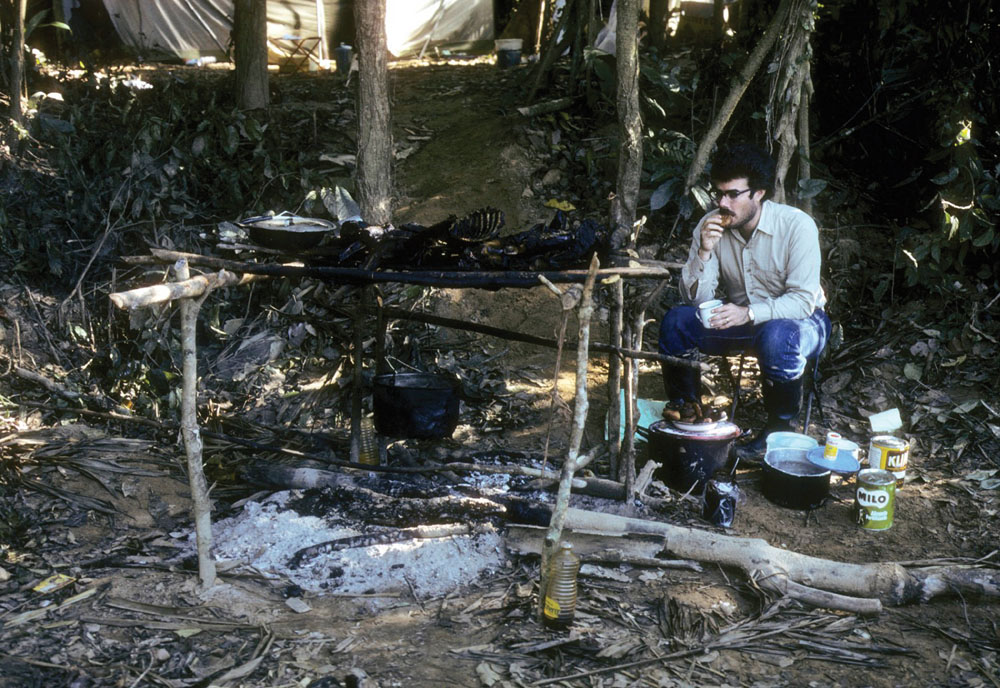
Modern Fieldwork
A young John O’Neill in 1977, camped by the Rio Heath on the border between Peru and Bolivia. The animal roasting on the makeshift grill is a tapir. The pot and other paraphernalia at O’Neill’s feet are ingredients for hot chocolate, a beverage he considers indispensable to happy camp life. Once, when asked what he most feared in the jungle, O’Neill replied, “Running out of sugar.”
Transportation on the Rio Shesha, Peru, during a 1987 expedition memorably described in Don Stap’s A Parrot without a Name (New York, 1990). The river runs near the base of the Cordillera Divisor, on the border between Peru and Bolivia; studying the unknown fauna and flora of these remote mountains was the goal of the journey. Stap called the river, which was running low, a veritable obstacle course, filled with submerged logs, sandbars, and tangles of brush. The dugouts were propelled by a straight-shafted prop attached to a lawnmower engine; neither the motors, nor their reckless operators, were reliable. During the two-day trip up the river mishaps were frequent, with bags of equipment and provisions floating down the river, chased by frantic members of the expedition. By the time the group reached camp, nearly all of their gear was soaking wet. . .” (ibid., 176). Unfortunately, the lush scenery and abundant wildlife experienced by Weid are gone; today the Rio Doce valley is almost completely deforested.
Along with participating in LSU expeditions and leading birding tours, Ted Parker was instrumental in establishing the Rapid Assessment Program (usually known by its acronym RAP) for Conservation International, a non-profit organization based in Washington, D.C. The idea was to bring together a core group of experts in several fields – ornithology, botany, mammology, forest ecology – to quickly inventory the biota of a fixed area, then provide the information to local authorities in hopes of provoking a beneficial local response. In 1991 Parker and the team were working in a region of southwest Ecuador, between the Andes and the Pacific Ocean, where 95% of the original forest had been cleared, much of it in the twenty previous years. Sadly, at times the assessments had to be rapid because they could hear chain-saws working all around them (Conniff 1991). Parker was killed in a plane crash while conducting a similar survey in another part of Ecuador.
Condor Expedition, 2006. This LSUMNS (Louisiana State University Museum of Natural Science) expedition ventured into the cloud forests of the Cordillera del Condor, a remote range of mountains on the border between Ecuador and Peru. Particularly from the Peruvian side, the area is difficult to access. Toyotas are the vehicle of choice.
Mules have always had a hard time of it.
There is no such thing as a waterproof tent.
The kitchen.
A russet-crowned warbler (Basileuterus coronatus) being carefully extracted from a nearly invisible net.
Preparing specimens of Jocotoco antpittas (Grallaria ridgelyi), a species discovered only in 1997. The first examples were found in southwestern Ecuador. The specimens being prepared in this photo were collected in northern Peru in 2006, a first record for the country, expanding the bird’s known range (and hopes for its survival).
Despite the large number of LSUMNS expeditions carried out in Peru, there are still poorly studied areas. One of these is the Department of Tumbes in northwestern Peru, bordering with Ecuador to the east and the Pacific Ocean to the west. Tumbes had been studied only briefly, by small expeditions, in the late 1970s and early 1980s. In order to sample the variety of habitats in Tumbes, which includes mangrove, deciduous, arid, and humid forests, and to investigate the high number of endemic species found there, a large expedition was conducted in the summer of 2009. The Tumbes River runs through most of these habitats between the Amotape Cordillera and the Pacific Ocean.

